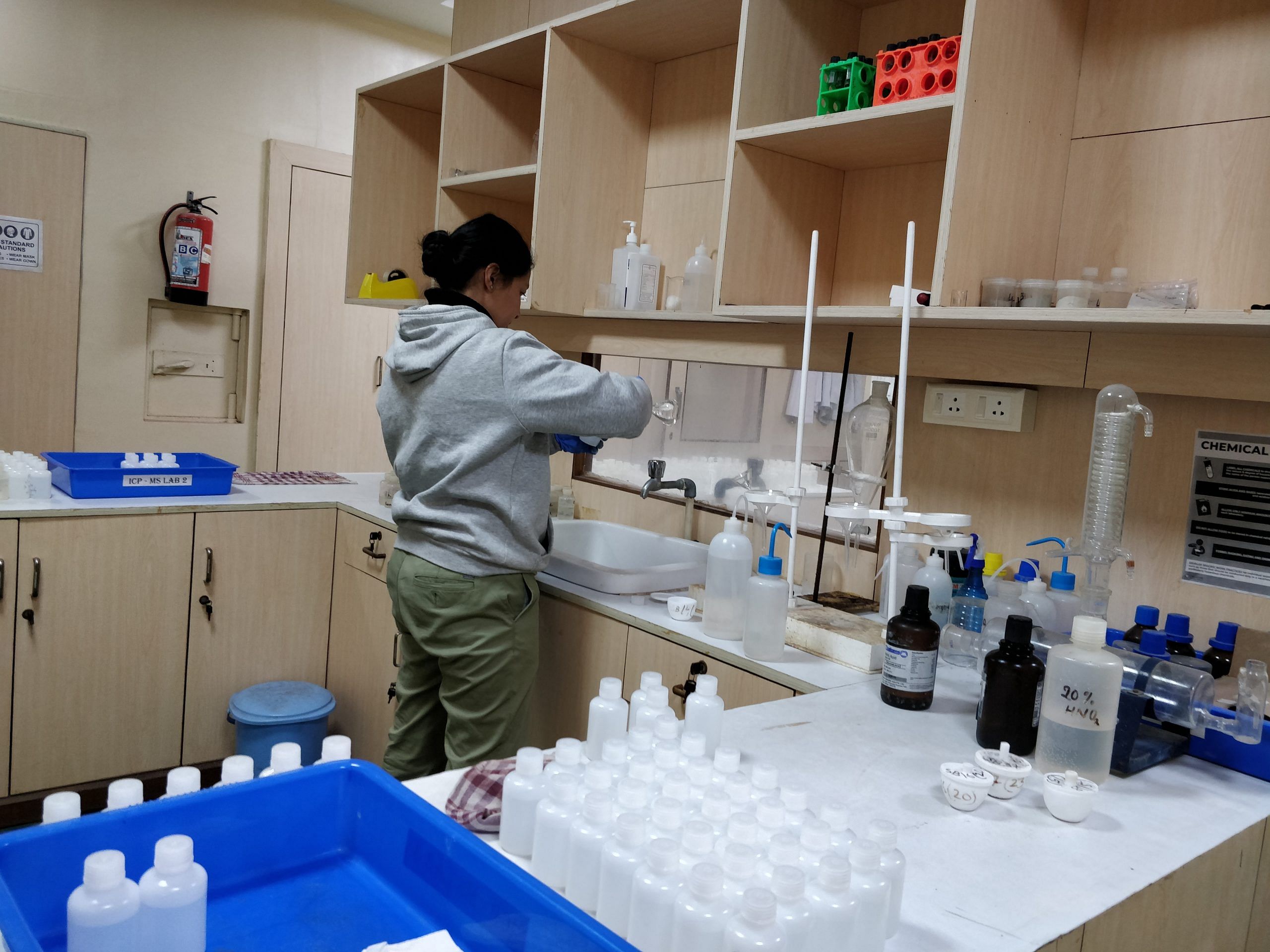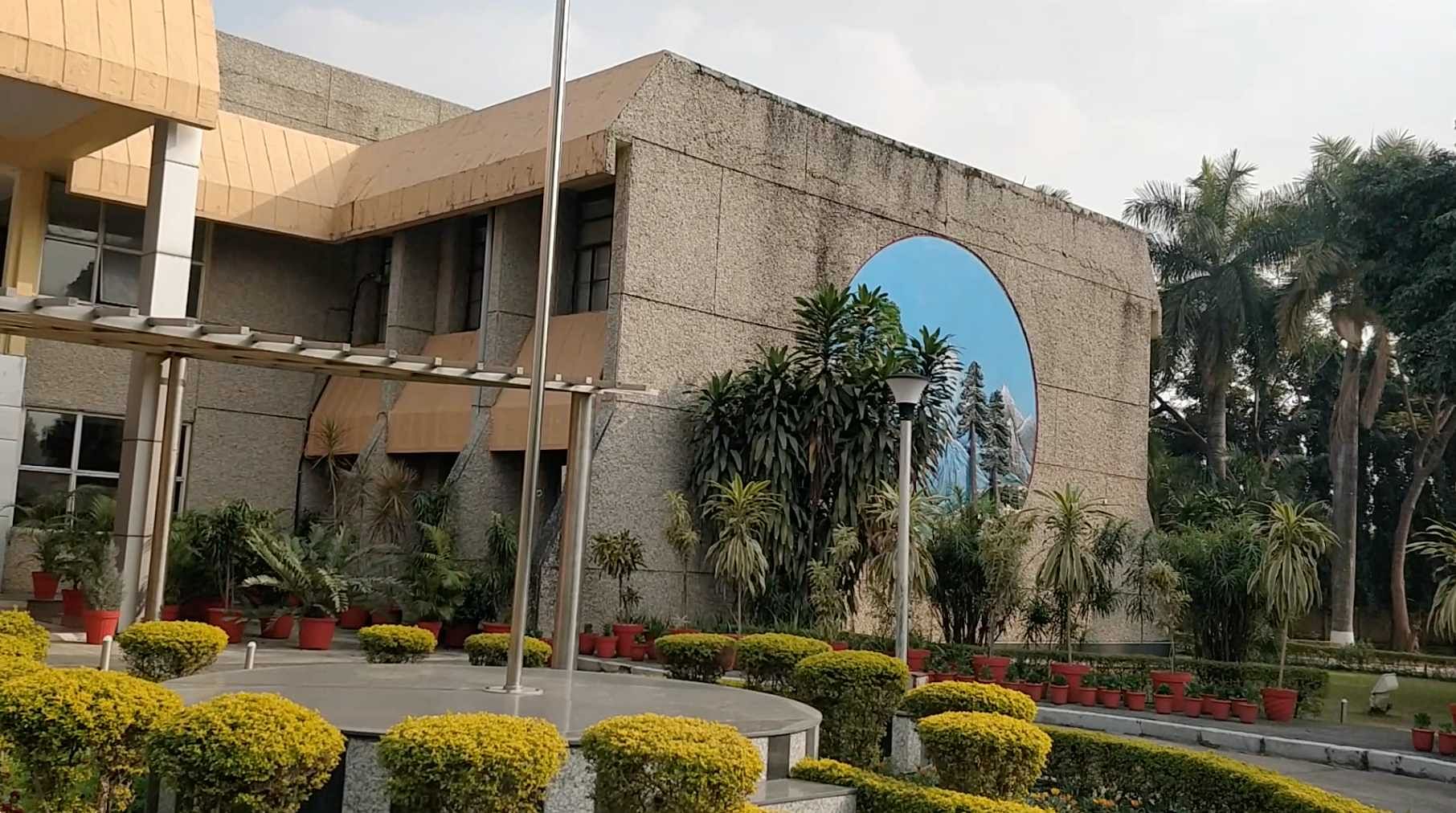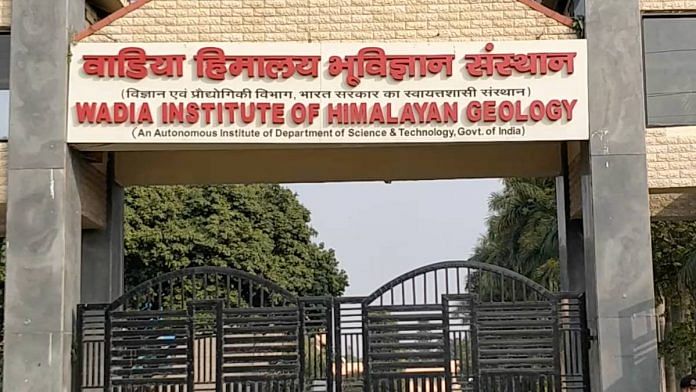Dehradun: Off the main road near Dehradun’s busy Ballupur flyover, sits a modest complex of buildings that produces some of India’s most unique research. From the fossils of plants and animals that lived millions of years ago to precious minerals carefully extracted from rocks found deep below the Earth’s surface, the Wadia Institute of Himalayan Geology is dedicated to chronicling every detail of the Indian subcontinent’s collision with Eurasia over 50 million years ago.
More pressingly, whenever disaster strikes in the fragile Himalayan region, scientists from here are rushed to the spot to provide their expertise and a prognosis.
The sinking of Joshimath is no different. Over the last two weeks, scientists from the Institute have been working with other agencies to try and salvage what’s left of the town that is faced with severe land subsidence.
What puts the Wadia Institute in a distinctive position to address issues like these is its expertise in the Himalayan region. It is the only research institute in the world that focuses solely on rocks and relics from the Himalayas, the youngest mountain range on Earth.
And because the Himalayas are still evolving, multiple universes open themselves up for study constantly, faculty and students at the institute told ThePrint.
“I want to do my work in the Trans Himalayan region, so this is one of the best places to help me do that. The Himalayas are still growing and the plates are still colliding, which is why we see so many new discoveries coming out from here,” said Shailendra Pundir, a postdoctoral scholar at the institute specialising in petrology, geochemistry, and geodynamics.
But as an autonomous institute under the central government’s Department of Science and Technology, it must work within certain constraints. Red tape marks routine tasks. A gag order on discussing the land subsidence in Joshimath is one the institute has complied with easily, and its current Director, Kalachand Sain, remained unavailable for an interview despite repeated attempts to get in touch over the phone, email, and in person.
At a time when climate change looms large, affecting the Himalayas in particular, work emerging from the institute is keenly sought after by national government bodies as well as international researchers.
“Studying the Himalayan geology is crucial because it controls so much of the subcontinent’s water budget and dictates the monsoon. It’s home to the third pole, and is one of the most seismically active zones in the world,” said Koushik Sen, a senior scientist at the Institute explained to ThePrint, adding: “Our research not only contributes to the fundamental science of the Himalayan region but also its impact on society and life.”
Also Read: 1,000-year-old Indian stalagmites more than geological wonders—they warn us of coming catastrophe
One-of-a-kind institution
Young geologists in India who seek to continue doing serious research don’t have many options after completing their Ph.Ds. Other institutes that pursue research in geology include the CSIR’s National Geophysical Research Institute, the Indian Institute of Geomagnetism, IIT (ISM) Dhanbad, IIT Kharagpur, and central institutions like the Geological Survey of India.
But Wadia remains popular because of its precise focus on Himalayan geology, and the opportunity to pursue unadulterated research.

“Wadia is a big name, and getting into the programme, either for a PhD or as a research assistant, isn’t always easy,” said Shubham Choudhary, a postdoctoral fellow who completed his Ph.D. from the institute. Choudhary worked for a commercial oil company briefly before returning to academia as a fellow, after ranking 38th in the National Eligibility Test.
“I wanted to come back here because I knew I would have the freedom to pursue my research interests without any hindrances. I can work in the labs at any time of night or day. If you’re a motivated person, then this kind of learning environment is ideal,” he said.
The institute itself is small and still, an air of studiousness filling its corridors. There are eight broad areas of focus, including geochemistry, geophysics, sedimentology, and glaciology — each of which has its own laboratory.
Among the campus’s shiniest new possessions is a mass plasma spectrometer, an instrument that measures isotopic ratios used in geochemistry.
Several research assistants and young scientists told ThePrint that working at the Wadia Institute was an attractive prospect because it has all the necessary equipment for study under one roof.
Today, the institute has 55 permanent scientists who are supported by dozens of Ph.D. scholars and research fellows. Including more young people in the institute’s academic pursuits became a priority after 2003, when Baldev R. Arora, former director, realised the average age of scientists was over 50 years.
“We introduced a scheme to include young scholars in the Institute, and now there are over 60 of them,” he told ThePrint over the phone. Arora served as the Institute’s director for six years, from 2003 to 2009. “I made it a priority to upgrade all our facilities and improve the infrastructure as well so that we produce high-quality research.”
Even though it’s the only one of its kind in India, it hasn’t risen to become a top research institute nationally or internationally. According to the Ranking Web of World Research Centers, the Wadia Institute ranks 84th out of 297 research institutes in India, behind the Bhabha Atomic Research Centre Indian Institute of Remote Sensing, and the National Physical Laboratory India. In the world, it ranks 1773th.
Upgrading the lab equipment hasn’t always matched pace with its development either. An ancient-looking computer sits in the geochemistry department’s spectro lab, where rocks are liquified to try and find various trace elements. The machine, bought in 2003, continues to service the geochemistry department — among the most lucrative for the institute.
“A lot of environmental tests are carried out by this department, so this machine is extremely useful. It works, but it’s not as efficient as the newer ones. We’ve ordered a new one, which will be installed in a few months’ time,” Mutum Rajanikanta Singh, a scientist who joined the institute in 2020, told ThePrint.
The process to replace the equipment has been slow, but not inconvenient, Singh claimed.
Darashaw Norsherwan Wadia — the pioneering geologist
The institute was founded by its namesake, Darashaw Nosherwan Wadia, in 1968. Wadia was a passionate geologist who traveled the world studying and presenting various geological phenomena — from minerals in Ceylon (now Sri Lanka) to Alpine geology in Switzerland. His interest in the subject was born at a time when it didn’t exist as a formal field of study in most Indian universities, and so much of his learnings were self-taught, according to several accounts.
He was appointed assistant superintendent in the Geological Survey of India in 1921, at the age of 38, and quickly rose through the ranks to become the central government’s geological adviser in 1944, to then holding the position of director for the Atomic Energy Commission’s minerals division intermittently till his death in 1969.
But Wadia’s fascination with the Himalayas — in whose midst he spent several years as a young teacher, in Jammu — remained steadfast according to records. It was in 1963 that Wadia proposed an institute devoted to the study of the Himalayas be set up. The Central Institute of the Himalayan Geology finally materialised in 1968 — a year before Wadia’s death — following which its name was changed in his honour.

Wadia’s writings and illustrations from his travels across the Himalayan range are adoringly put on display in the Institute’s museum, alongside the fossils of giraffes and elephants that once walked the earth.
The museum is perhaps one of the most interesting parts of the campus, capturing the origin and evolution of the Himalayas, and forcing visitors to look closely at specimens that are otherwise overlooked. Hundreds of people — mostly students and other geologists — visit the museum each year, and leave glowing comments in its logbook.
Artifacts on display include volcanic ash, the skull of a Homo erectus ( among the earliest Human species), the fossilised barks of trees, and sediments from prehistoric times, among hundreds of others.
Also Read: Modi govt’s proposed geoheritage bill protects sites capturing Earth’s history. What it means
Lack of growth, move away from ‘fundamental research’
Though its scientists have long warned about the fragility of the Himalayas, several experts have critiqued the institute’s inability to command greater attention from the state and central governments. As an autonomous institute largely funded by the government, it’s often torn between producing academic research and lending its expertise to government projects and court-appointed committees.
Large development projects, as well as unplanned townships, have continued to bloom across the Himalayas despite well-documented studies showing how detrimental they can be to the region, for example.
“When I was director, we had conducted a study showing that no more than around 500 people should visit the Badrinath shrine at a time because any more than that would cause great stress on the environment. The government had conceded at that time, and some guidelines were drafted,” former director Arora told ThePrint. “But I’m not sure what’s happened now.”
The slow erosion of the institute’s focus on fundamental research — research rooted in expanding knowledge bases and formulating theory — as well as the lack of administrative opportunity at a senior level is why Pradeep Srivastava, now an associate professor with IIT Roorkee, decided to leave in 2021 after serving the Wadia Institute for over 16 years.
“In a small Institute like Wadia, everything has to be routed through the Director, and the Director is under the secretary of the DST. It’s a good place to start your career because they have every facility you might need. But at my level, you also start to seek lateral movement within the organisation. At Wadia, there was very limited scope for that,” Srivastva, who won the G. K. Gilbert Award for excellence in geomorphological research in 2007, told ThePrint.
The implications, Srivastava said, was a limited sense of growth. “The government has certain mandates, but we are academicians. We cannot align with any policies or political scenarios,” he said, adding: “Earlier, Wadia was a very classical geology institute, but there has been a greater shift towards applied research. This isn’t necessarily a bad thing, but if fundamental research takes a back seat, and if applied research comes with conditions, then it limits academic pursuits”.
Sen, the senior scientist, acknowledges a gradual shift away from the fundamental sciences and towards applied research within the Institute. Applied research focuses on the problem-solving aspects of scientific inquiry. But according to him, more diversity is a welcome change. New research coming out of the institute includes developing early warning systems for landslides and closer monitoring of melting glaciers — both of which are likely to worsen with the effects of climate change.
“Before we concentrated on geosciences and geophysics, but now we have students from various streams, including the environmental sciences. This diversity has helped strengthen some of our findings as well,” he said.
(Edited by Uttara Ramaswamy)
Also Read: Why is Joshimath sinking? ‘Construction on unstable land, poor drainage, deforestation’



